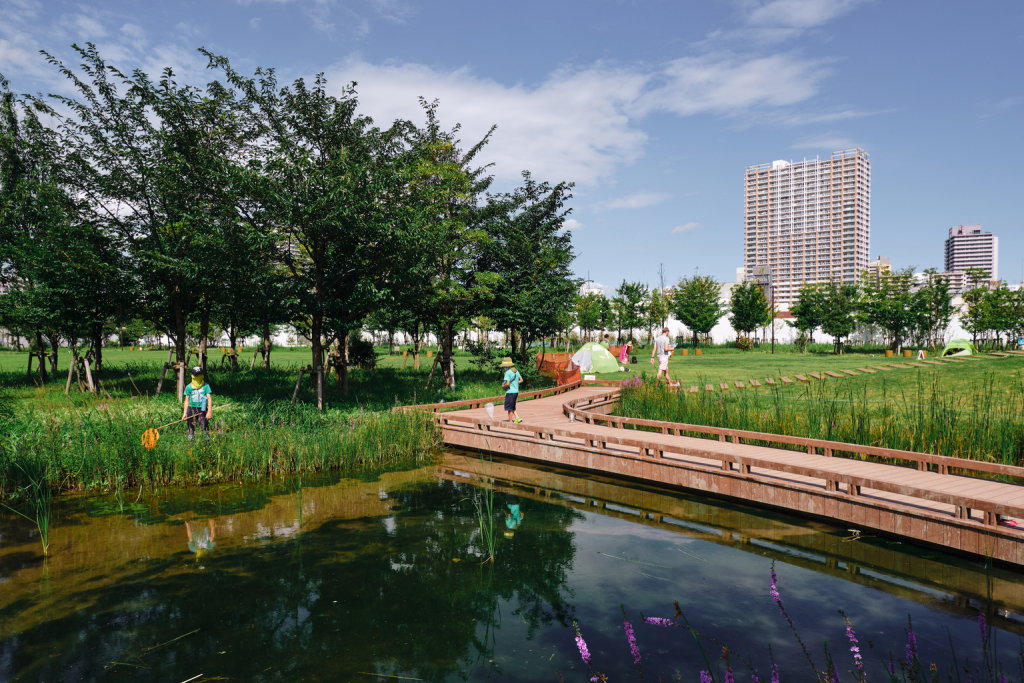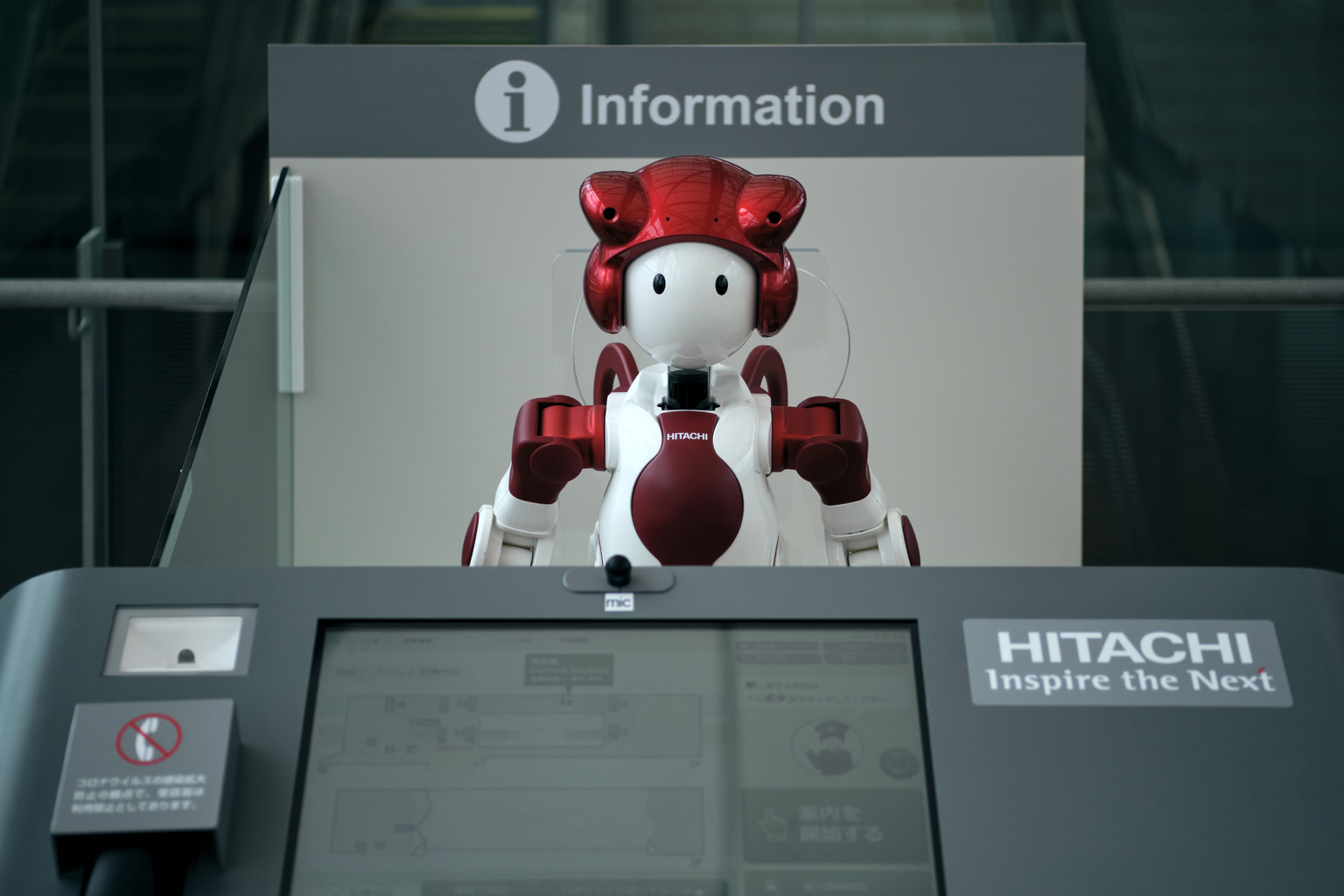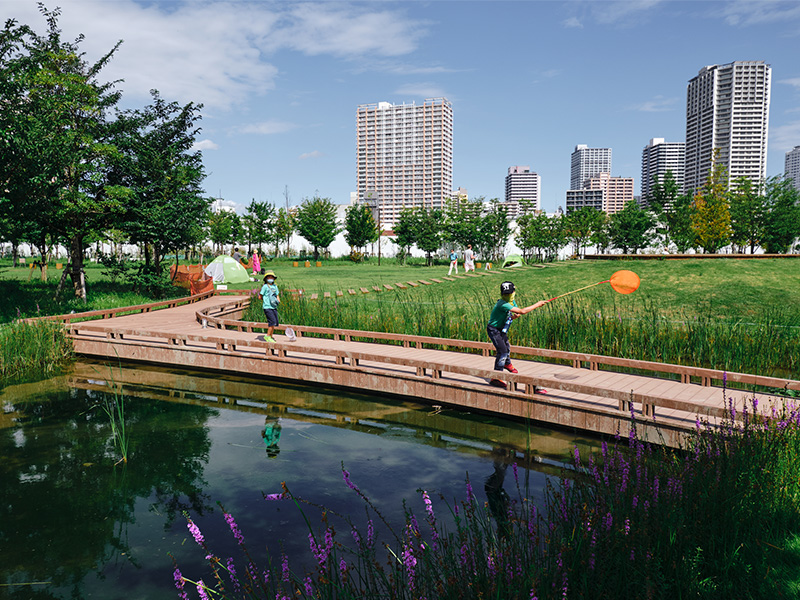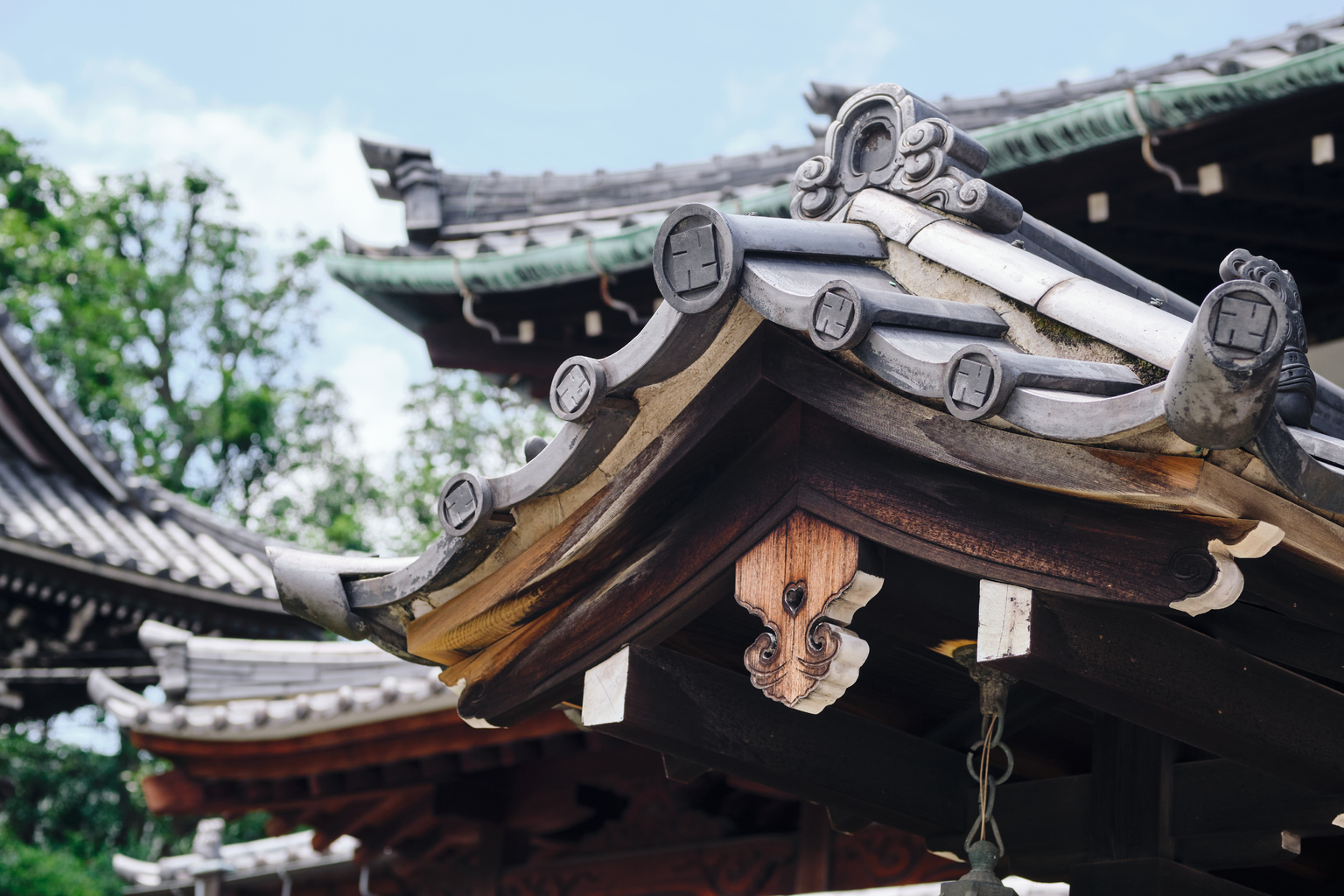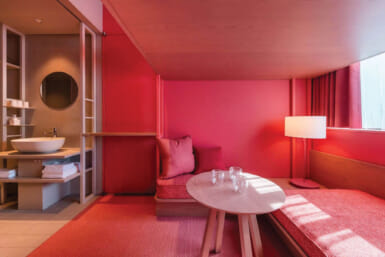Slotting in between Tamachi and Shinagawa, the Takanawa area is set to see a lot of development in the coming years as plans for its transformation into a hub for global business begin to pick up the pace. A new complex of skyscrapers and interlocking pedestrian walkways designed to resemble an archipelago is not expected to be complete until 2024, but the high-class neighborhood (which former Emperor Akihito and his wife are temporarily calling home at the Takanawa Imperial Residence) already has some worthy attractions to enjoy before that future arrives.
Gateway to the Future
Despite trailing in 130th place on the list of potential names polled by the public, Takanawa Gateway was ultimately the choice of the powers that be bestowed on the newest station to open along the Yamanote Line in 50 years. (Public sentiment be damned.) High profile architect and wood enthusiast Kengo Kuma is responsible for design of the airy, naturally lit atrium. It certainly provides a Japanese aesthetic to the station which could so easily have been just another sleek but bland structure.
The station is a showcase for current tech too, with a strong emphasis on automation. There are robots to be found around the station performing tasks that include voice recognition guidance, cleaning and security (using facial-recognition tech) while digital maps and an automated Touch to Go convenience store add to the sophistication. Viewing the goings-on of the station without actually having to enter is possible thanks to a viewing platform outside the branch of Starbucks (which has a few semi-private booths available if you’re in the mood for minimizing distractions whilst sipping on your favorite beverage and getting a bit of work done).
Water, Water, Everywhere
East of the station exits leads you to the islands of reclaimed land overlooking Tokyo Bay (a brisk 20-minute walk will get you to the water’s edge for a view of Rainbow Bridge). Laying directly across from the railway lines is the Shibaura Water Reclamation Center, which has been in operation since 1931 and has a free, educational museum should you wish to learn a little more about how it all works. Part of the site, and visually more pleasant, is the spacious Shibaura Chuo Park. The wealth of greenery makes it a great place in which to unwind by strolling along its promenade or relaxing peacefully within the grassy areas as the new townscape unfolds in the background.
Ronin, Ronin, Ronin…
There are much more interesting finds heading west from the station and into the hilly backstreets of Takanawa itself, such as the German Expressionism influenced Takanawa Fire Station Nihon-enoki Branch (constructed in 1933). It’s still an active station but visitors are allowed to explore the insides of the building, which includes a mini-museum up in the circular hall of its third floor. Further up the road, the quaint Museum of Logistics explores the growth of the logistics industry in Japan since the Edo period through a variety of dioramas and hands-on exhibits. Elsewhere, Takanawa Shrine, Koyasan Tokyo Betsuin Temple and Tozenji Temple are worth stopping by – the latter being the site for the first British legation in 1859 and featuring a charming three-story pagoda within its secluded grounds. Other places of worship in the neighborhood include the Takanawa Catholic Church, the Protestant Takanawa Church, or if you’re feeling particularly curious, the headquarters of the controversial Happy Science religious movement (housed in a rather pompous Greek-style building).
The most notable landmark in the area, however, is Sengakuji Temple. The site is the final resting place of the legendary 47 ronin and their master Asano Takumi-no-Kami Naganori, whose death they famously avenged before committing ritual suicide themselves. There’s also a small, single-room museum on the grounds with a few more artifacts and information about the events that are commemorated every year in a ceremony on December 14.
Dine Like A Prince
While there are some good independent eateries to be found around the area such as Forest Stand Sengakuji (great for a light lunch and a coffee break) or the higher-end Sengakujimonzen Monya, head to Grand Prince Hotel Takanawa for more eclectic dining options. The grounds were once part of Takeda Palace and home to another member of the Japanese imperial family, Prince Tsuneyoshi Takeda. As president of the Japan Olympic Committee, he was influential in bringing the games to the capital in 1964 (though his connection with the infamous Unit 731 during World War II somewhat tarnishes his reputation).
The beautiful 20,000m² secluded garden serves as a backdrop for the hotel’s restaurants, which include the spacious Komyo Lounge, Wakatake Tempura Restaurant and Katsura Steak House. You can top off the evening by taking a stroll around the elegantly illuminated garden and its koi-filled pond or hop across to Maxell Aqua Park Shinagawa for some dazzling aquatic-themed light-driven entertainment.
Photos by Stephan Jarvis

